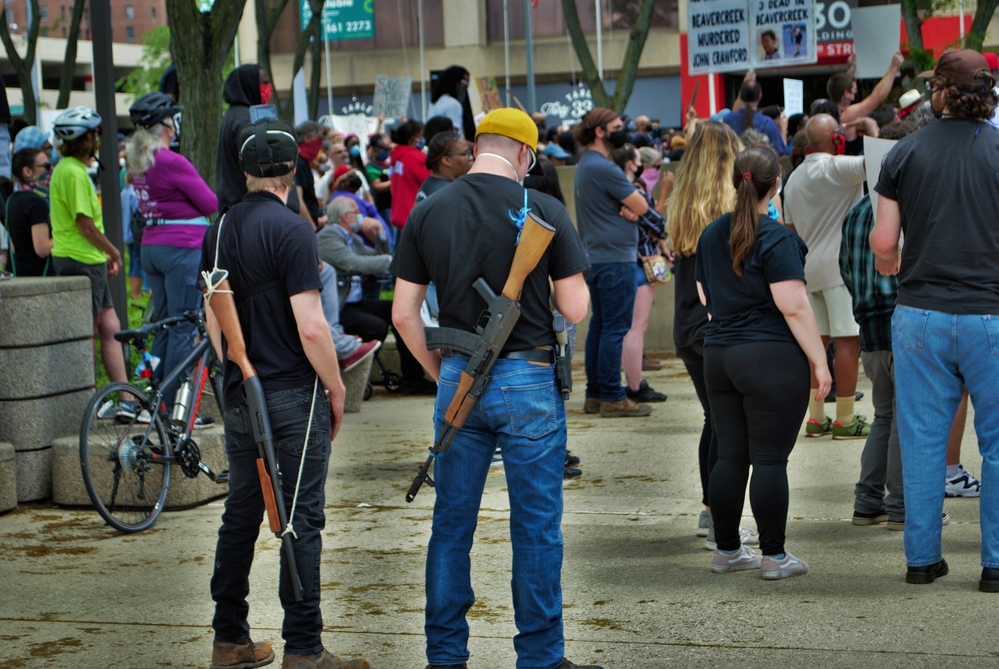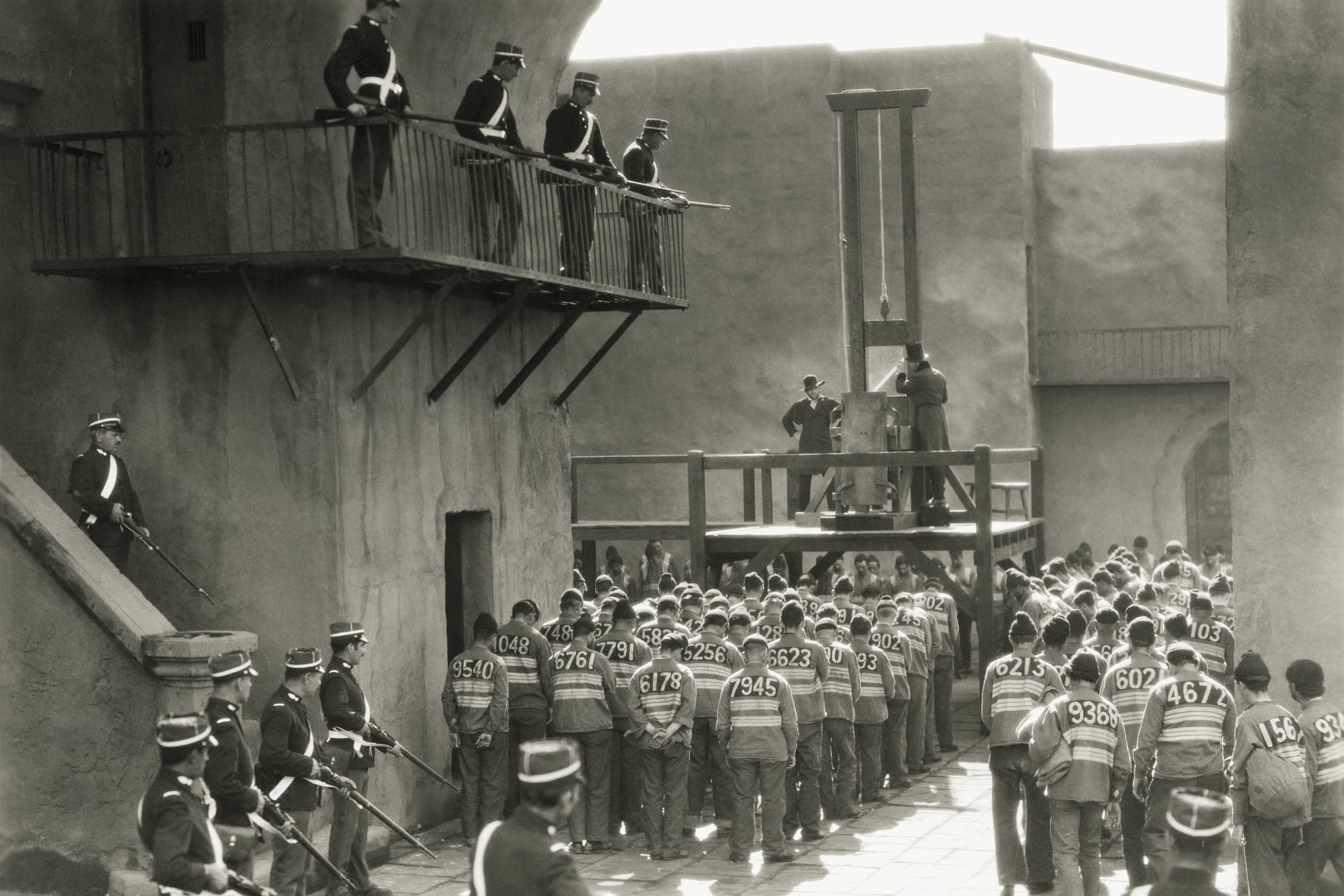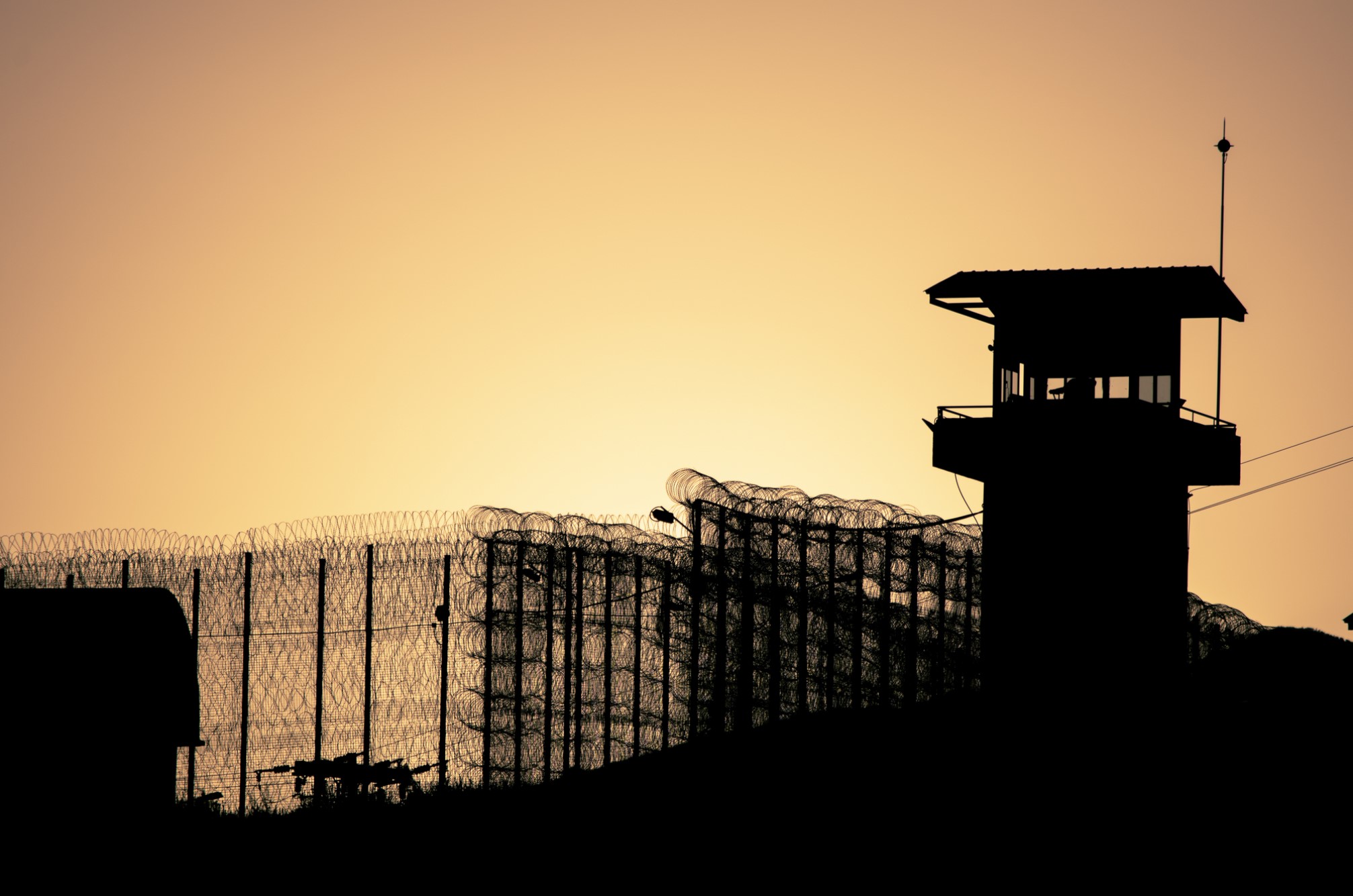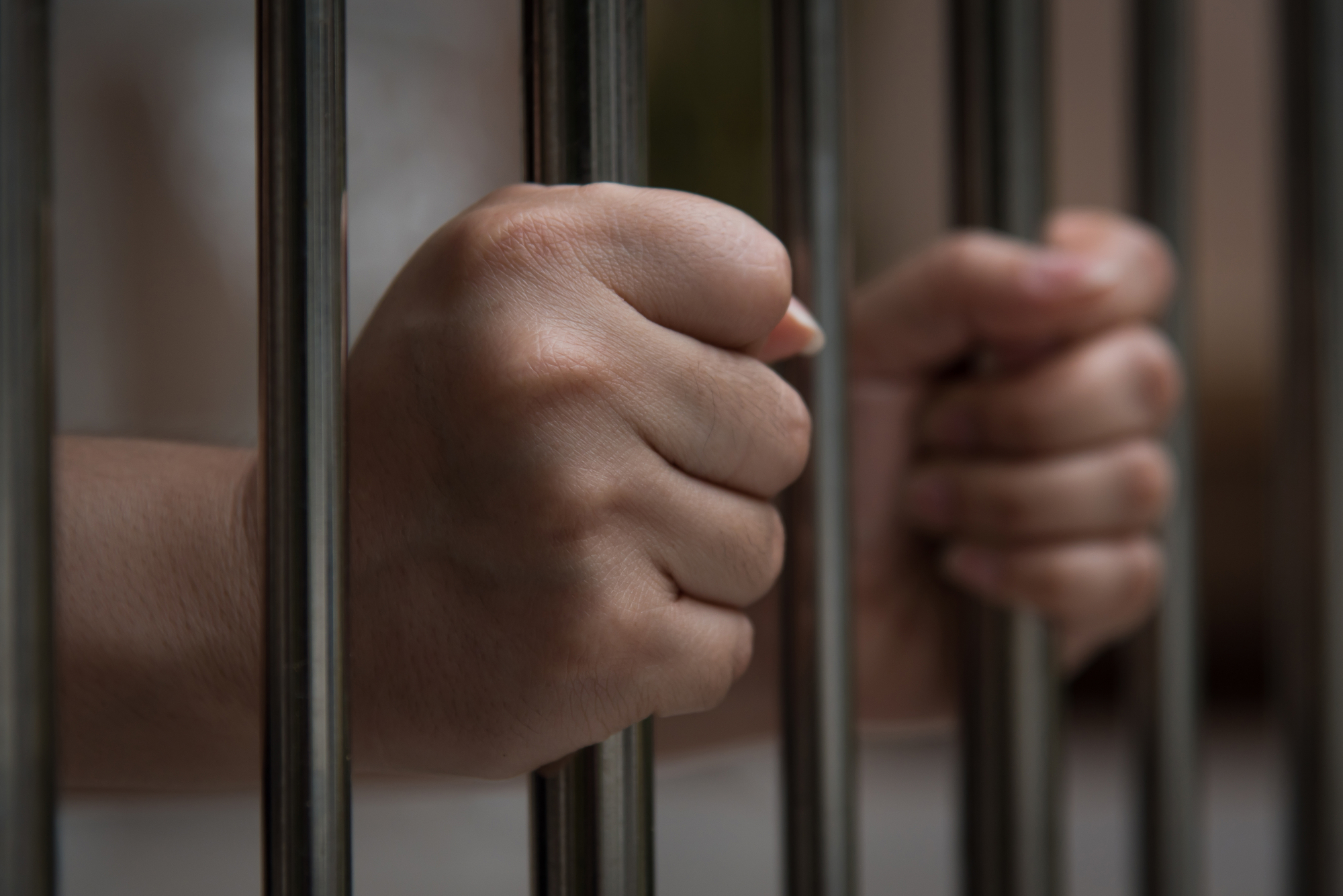Kyle Rittenhouse and the Legal/Moral Limits of Self-Defense

On August 25th, Kyle Rittenhouse carried a firearm into the protests in Kenosha, WI. He killed Joseph Rosenbaum, 36, and Anthony Huber, 26, and seriously injured Gaige Grosskreutz, 26.
Rittenhouse is being charged with one count of first-degree intentional homicide; one count of first-degree reckless homicide; one count of attempted first-degree intentional homicide; and two counts of first-degree reckless endangerment. The Kenosha police chief called the shootings a senseless act of violence on protesters: “We’ve had two people lose their lives senselessly while peacefully protesting,” Chief Miskinis said.
His lawyers, on the other hand, claim that he was “protecting his community,” acting in self-defense: “before Rittenhouse fired his gun, he was ‘accosted,’ ‘verbally threatened and taunted’ by ‘rioters’ while he guarded a mechanic’s shop alongside a group of armed men.” By claiming that Rittenhouse was acting in self-defense the legal team invokes one of the most intuitive exceptions to the prohibition on inflicting harm on another person. But, there are limits, both morally and legally.
Morally speaking, the views on the appropriate use of self-defense are more varied than the range permitted by law. This is of necessity – to allow broad ranges of interpretation in matters that include inflicting harm on one another isn’t conducive to a well-functioning legal system. In ethical theories, the question of self-defense involves slightly different questions than in the realm of law. Legally, you have some right to defend your person — though the conditions differ by jurisdiction — and this presumption already diverges from one moral position: pacifists. Pacifists defend the position that harming another person is never justified. There are pacifists that emphasize that this lack of justification arises because of the alternatives to harm that are ever-present, and this concern does show up in many self-defense statutes. If someone can avoid using force in order to defend themselves, then this can undermine the justification for the use of force (though in WI, there isn’t a “duty to retreat” as there is in other states).
Other pacifists emphasize that the same principle that makes it inappropriate for your assailant to harm you also holds in the case of your harming them. And it gets more complicated because most theorists agree that not all cases of harming someone in order to avoid them harming you are justified. There are limits to when defensive force is permissible even for non-pacifists. Self-defense doesn’t always work as a defense, so to speak.
Imagine if I put myself in the position where I needed to defend myself in the first place. In such circumstances, the role of the “attacker” becomes more murky, and the sense in which I need to defend myself becomes harder to explain. This complicates matters for a number of ethicists. In such a case, if some action of mine could de-escalate the situation or prevent the threat to my safety, then I am not justified in using force to defend myself. Underlying these cases is the idea that we can avoid circumstances where inflicting harm, or at the very least inflicting lethal harm, on assailants. If generalizable, this would undermine the force of the self-defense arguments.
For example: Imagine that I am robbing a house with a firearm, and the homeowner pulls a gun on me, shouting “Make another move and I’ll shoot!” I believe the homeowner to be a little trigger-happy and fear for my life. I shoot the homeowner out of this fear, and thus in self-defense. Was I acting permissibly in shooting the homeowner? According to moral theorists, self-defense doesn’t clearly apply here because the home’s defenders were responding to my use of force. The important feature, arguably, is that I could avoid defending myself by ceasing my aggressive, law-breaking conduct that initiated the exchange. When I threatened the homeowner with lethal force, she was using appropriate force in response. Morally speaking, if I stepped down and ceased posing a threat, the homeowner loses her moral justification for threatening harm to me.
Here the law and these moral theories arrive at similar conclusions (with the Castle Doctrine complicating matters), but with important differences. Legally speaking, breaking a law at the time of defending your safety undermines a claim to self-defense, but not entirely. However, it isn’t purely the lawbreaking that changes the morality of the situation for all ethicists. In this idealized scenario, the threat to my life exists because of my threat to the homeowner. If I stop my threat, I do not need to harm anyone in self-defense.
According to Wisconsin’s self-defense law, people are permitted to “use force which is intended or likely to cause death or great bodily harm (if they) reasonably believe that such force is necessary to prevent imminent death or great bodily harm to (themselves).” The key here is what the defendant reasonably believes. If the defendant’s lawyers can establish that he had a reasonable belief that he needed to use the force he did to prevent imminent death, his self-defense claim may stand. In Wisconsin, there isn’t a duty to retreat before using force. As such, a great deal rests on whether the jury judges that Rittenhouse had a reasonable belief that his use of lethal force was necessary to preserve his life. The jury’s judgment will depend on a variety of interpretative aspects, as none of the defendant’s victims seem to, in fact, be directing lethal force at him according to witnesses and video, and only one was armed at all. But there is often a distance between what is true and what someone reasonably believes is true.
Eric Zorn, news and politics correspondent for the Chicago Tribune, highlights elements of the scenario from both the legal and moral discussion above: “Did the teen willingly put himself in that fraught milieu and illegally, allegedly, risk a horrific escalation of that danger by carrying a gun on the scene? Yes.” Rittenhouse chose to put himself into a potentially lethal situation. In fact, that the situation was dangerous is his reason for being there. For some theorists, this makes a difference in how morally justified he is in using force against his assailants. He could have avoided the risk to his safety and avoided inflicting harm, similar to the armed burglar example.
Zorn also notes: “What about the context, though? The confrontational, high-adrenaline interactions that led up to the tragic deaths. The night air punctuated by gunshots. Danger all around.” From a legal perspective, and also according to some moral theorists, the relevant context is more narrow in scope. It is the setting in which Rittenhouse killed two people and injured another. Did he reasonably feel his life was threatened then? And was lethal force his reasonable route of defense?
Rittenhouse’s lawyers say yes: “In fear for his life and concerned the crowd would either continue to shoot at him or even use his own weapon against him,” the lawyer’s statement says, “Kyle had no choice but to fire multiple rounds towards his immediate attackers.”
But there are further moral and legal issues that the Rittenhouse case represents.
Aside from the question of whether there was a reasonable belief in a lethal threat to his life, Rittenhouse faces further legal scrutiny in his carrying of a firearm illegally. Further, his behavior exists in a context of a culture that is praising violent responses to protests of police violence, and in this case, inciting violence in response to them.
Rittenhouse allegedly did a lot of illegal things. The 17-year-old reports being motivated by a call to protect people and businesses in Kenosha, and arrived with a gun at an auto mechanic’s on August 25th. His lawyers claim that the 17-year-old’s “intent was not to incite violence, but simply to deter property damage and use his training to provide first aid to injured community members.” The lawyers also report: “Rittenhouse and others stood guard at a mechanic’s shop near the car depot, even after the curfew was in effect.” Unfortunately, Rittenhouse’s chosen method of “deterring property damage” was standing guard with an assault-style rifle he was not legally permitted to possess in Wisconsin, or conceal carry in his home state of Illinois.
Rittenhouse is facing misdemeanor charges for his illegal engagement with the assault-style rifle. Meanwhile, the calls for armed response against the protests in Kenosha have come under scrutiny. Facebook chief executive Mark Zuckerberg said the “Armed Citizens to Protect our Lives and Property” event, hosted by the Kenosha Guard on Tuesday night encouraging armed people to go to Kenosha, was in violation of policies and should have been removed. The direct calls for armed citizens to go to Kenosha were seen as inciting violence, and thus inappropriate on social media. We see their impact in Rittenhouse’s behavior, and the deaths that the calls result in.
In response to these protests, besides directing violence to the protestors themselves, there has been an outpouring of praise towards the people committing the acts of violence. For example, Rep. Thomas Massie (R-Ky.) praised Rittenhouse’s “incredible restraint” at not emptying his magazine into the crowd. And though he also admitted to not being as aware of the circumstance of the murder of Jacob Blake as the case against Rittenhouse, despite claiming: “As a 17-year-old, he was legally entitled to have that firearm in his possession. This is 100% self-defense.” Likewise, DeAnna Lorraine, a Republican congressional candidate, tweeted: “We need more young people like Kyle Rittenhouse and less like Greta Thunberg.” And even President Trump praised Rittenhouse in a tweet: “The only way you will stop the violence in the high crime Democrat run cities is through strength!”
While praise and comparisons to heroes might not rise to the level of incitement — it does not directly encourage another person to commit a crime — it is still dangerous. So, on the other side of the incitement that drove Rittenhouse, there is the encouragement and positive reinforcement that leads to think pieces about an oncoming Civil War.
When the praise heaped onto a vigilante who acted in response to incitement comes from so many sources, the positive reinforcement becomes dangerous in itself. It doesn’t constitute incitement, but continues to divide cultural battle lines where institutional systems that promote violence are paired individual citizens suppressing voices protesting those systems. This encouragement, the incitement, and the people who act on it are a unified voice against change and institutional reform.
This praise is not for someone acting in self-defense. It is for acts of aggression against people rising up against violence and murder. The mixed messaging regarding the case of Kyle Rittenhouse may complicate the case for self-defense. Is he a brave patriot, fighting on the side of law, justice, and the American way, or a scared innocent simply trying to protect himself?




